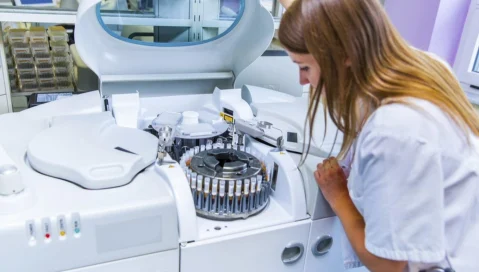10 Reasons Why Research Scientists Should Patent Search
10 Reasons Why Research Scientists Should Patent Search
10 Reasons Why Research Scientists Should Patent Search
29 Okt 2015
Henk Heus
Like any molecular biologist that has worked in pharma research, I have searched through and read a lot of scientific literature. I like to think that I’ve gotten pretty good at it. I’m always surprised though, when I run into colleagues who don’t spend much time searching patents on a regular basis. I understand that the patent world can seem daunting and confusing, and even knowing where to start is difficult, but there are pretty strong arguments for including patents the next time you research a topic.
1. Stop Wasting Your Budget
It has been estimated that up to 30% of all R&D expenditure is wasted on redeveloping existing inventions. Most of these unnecessary costs can be avoided by searching existing knowledge on a topic first. While many researchers diligently go through scientific literature and books, they often forgot about patents. Patents are a large, up to date source of information on applied science and technology, and should be included in all state-of-the-art searches.
2. Find Relevant Information Not Found Anywhere Else
Patents contain a lot of information that is not published in scientific journals. The European Patent Office (EPO) claims that up to 80% of current technological knowledge can only be found in patent documents. This is because overall it is easier to file a patent than to publish a peer-reviewed paper, and with patents there are no restrictions on the number of pages used to describe the experiments and results. Also, as a matter of policy, many companies do not disclose their R&D results in any other way than through patents.
3. Find This Information Sooner
Being the first to patent something, the right of priority, gives people a strong incentive to file early and disclose all information in a great amount of detail. Soon after a patent application is filed it becomes available to the public after which it should be included in state-of-the-art patent searches.
4. Find High Value Information
Filing a patent costs time and money, and companies generally do not do it unless they think their invention has value to their business. If it has value to them, then you should probably know about it as well.
5. Get Free Inventions
Many patents are no longer valid. Not only do they expire after 20 years, at which point anyone can use the invention, many are also abandoned much earlier in the patent life cycle because fees are not paid on time or because they simply do not get granted. Around 85% of all patents are no longer in force or have never been in force. These are free inventions for anyone’s use.
6. Use Granted Inventions as Well
Even when a patent is in force it can still be useful to know about it. In some situations the invention may be used for experimental purposes. Also, a researcher might decide to consult an IP specialist in the company and change research direction, or license the invention from the patent owner. Of course, anything that is not explicitly mentioned in the patent claims is always free information.
7. See What the Competition Is Doing
Patent searches are the perfect way to gather business intelligence and monitor innovation strategies of other players in the field very early on. Use this information to your advantage and adjust your own R&D strategy or find potential collaborators this way.
8. Prepare for Filing Your Own Patent
The only way to prove that an innovation is really new is to search all existing knowledge, including the patents. In fact, examiners at the patent office will always search existing patents before they try anything else.
9. Search the Full Text, Not Just the Abstracts
For commercial reasons, the full text of scientific articles is often locked behind a paywall. As a result, popular literature search tools will only let you search the abstracts, causing you to miss a lot of important information in the rest of the article. Patents are always available as full text, giving you the choice of searching only the abstracts or searching all text.
10. Searching Patents Is Easy to Do Nowadays
Gone are the days when patent searching required extensive training or the assistance of an IP specialist. With a web-based patent search tool like Aptean LifeQuest it is very easy to search an always up-to-date database of life science patents filed anywhere in the world.
Aptean LifeQuest helps you construct better queries using suggestions of synonyms for your search terms that are pulled from life sciences ontologies like MeSH and Gene Ontology (GO). It also helps you manage your search results, so you can find the most relevant things quickly. There are no more excuses for not searching patents.
Unlike conventional or free search tools, our industry-specific search tool, Aptean LifeQuest truly understands your query, giving you a targeted, comprehensive set of results without false-positive hits from non-life science patents.
Be the first to find the latest patent information and get ahead of the competition. Start enhancing your patent search and request your free trial today.
Related Content


Klaar om te zoeken naar IP-sequenties
Gebruik ons gratis Request for Proposal (RFP)-sjabloon om de juiste IP-sequentieoplossing voor uw bedrijf te vinden.






